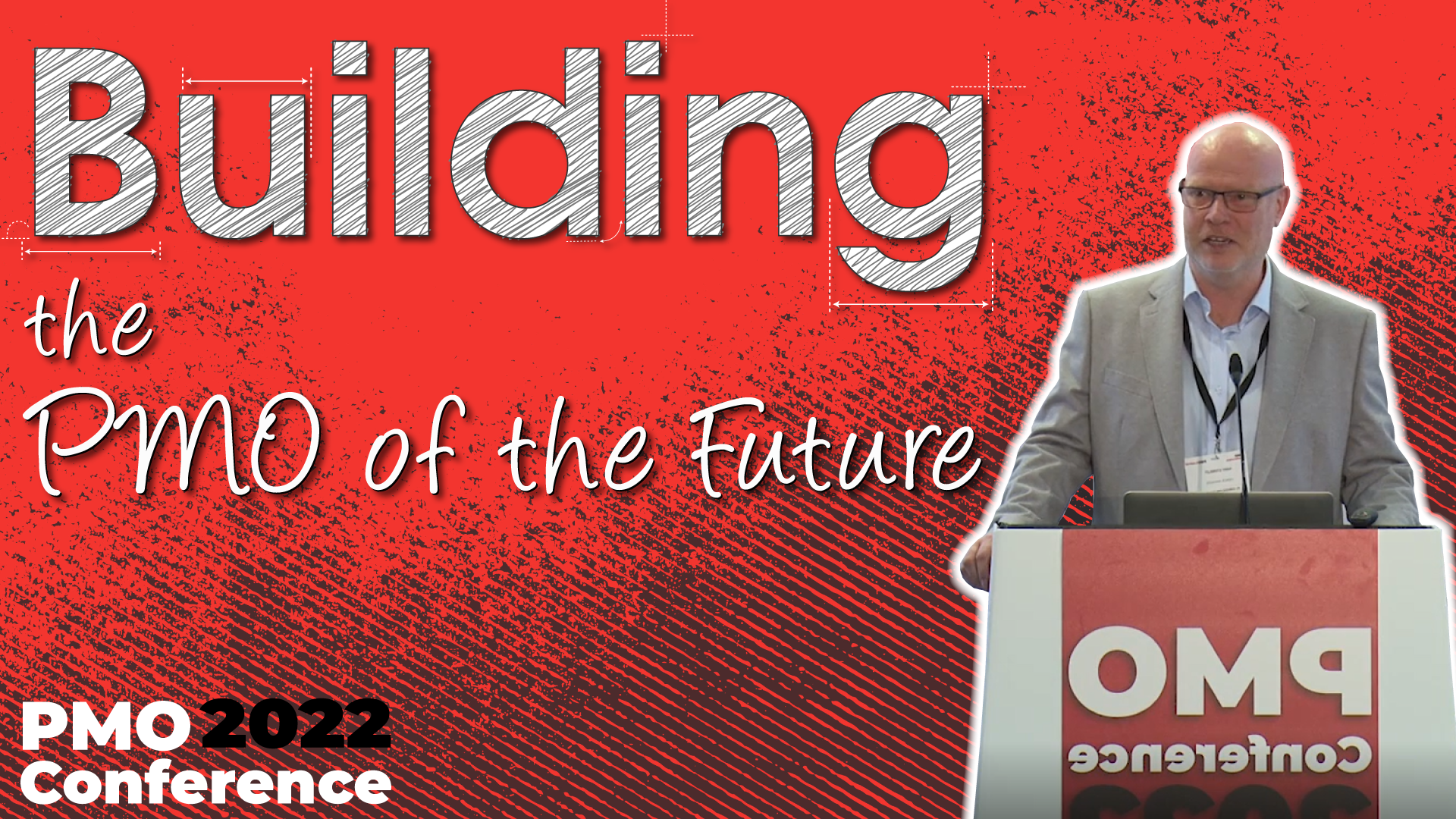Watch back all our PMO Conference sessions
PMO Conference 2022 \\ Building the PMO of the Future – Selfridges and P2 – Gary Stoneley
Over recent years, Selfridges has been on a customer experience transformation journey. Its purpose being to build a globally customer-centric business that can adapt to changing customer needs in order to drive growth, both domestically and internationally across all channels.
Their transformation programme touched most areas of the business (Buying & Merchandising, Supply Chain, Online, Central Services etc.), and touched People, Process, Tech, Data, Suppliers, Sustainability and Brands. It was also the first time Selfridges had embarked on a transformation programme of this magnitude.
As the size and complexity of the programme increased over time, Selfridges’ leadership realised that they needed a high-performing portfolio management office to get a grip of the change that was being driven into the business both domestically and internationally. They also needed a partner that was aligned to their organisational culture and behaviours.
In this session, Gary Stoneley shares how P2 (Valcon) collaborated with Selfridges to support them during their journey – both the highs and the lows. And how collaboratively, significant milestones were delivered, and competitive benefits achieved in what were turbulent times for retail.
Key Takeaways Included:
1. Insight into creating a value-add PMO equipped to respond to the challenges of unprecedented business change, complexity, and varying levels of delivery maturity
2. First-hand account of the short-term transition to trading a digital-only business, and the role that the Agile PMO played in enabling that journey
3. How the use of innovative tooling, automation and data analytics can deliver scalable, efficient and effective business and PMO solutions for your organisation
Session Recording
Slidedeck
Session Notes
Gary Stoneley has been working with a variety of clients and customers over the past 20 years and was parachuted in at the last minute to stand-in for Adrian Mangan. Gary did a great job of talking us through the journey that Selfridges PMO went on with P2/Valcon, and I was quite fortunate to have sat next to a member of the Selfridges PMO who was nodding and agreeing all the way through the presentation, real partnership working in effect.
Valcon are a consultancy based in Western Europe that was bought by P2 at the start of year. P2 bought Valcon because they provided consultancy capability to deliver under three areas: Operational Design, Transformation Delivery and Transformational Control
Selfridges has been on a customer experience journey, named the 2020 Programme since 2015, with the primary channels being the flagship and 3 other stores. The programme impacted HR / Digital / CX / IT with 5 major change programmes.
The evolution of the PMO can be seen on the roadmap and was instrumental in the pivot to digital during covid-19, and underpinned all activity, they consulted with P2 and as you can see from the yellow blobs the were aligned to the overall program and despite events that happened around them like stopping projects during covid which led to an element of scaling down, they evolved into a strong digital PMO.

The challenges the PMO faced included: Defining offerings and training the existing team on those requirements (this training drove behaviour needed to embed the new WOW); Strengthened planning processes after attrition resulted in re-working existing support; Resolving blockers after “telling teams” to want to do things wasn’t enough, progress was hampered in the shift to Agile.
PMO 101 was delivered as part of the transformational control, ensuring the building blocks were in place for the future. 7 services were deployed as a part of secondment to deliver the breadth and depth of the services required. It took a blended approach to provide resources from both teams, which provided resilience to role swap and respond to the customer.
During the shift to Agile way of working a new framework was mapped from Idea through to BAU which included a decision on type of initiative (Enterprise, Digital), t-shirt sizing on a weekly basis, 6 criteria prioritisation based on importance to the business. After this the idea can then move from demand to supply and handshake into a prioritised backlog before move to delivery and hand over the initiative to tribes and squads as the development work is deployed. There were 60 initiatives brought in and the effort managed within the constraints of the team.
Pragmatic agile was needed to accelerate pipeline. Story points were developed and moved through sprint value into a show and tell value release. Metrics have been used to monitor the production line as story points are elaborated each day. By releasing value focussed on test scores they were able to speed up the production line and get value out of door.
To share best practice and innovation: Mobile apps enabled enhanced management of risks and issues when triggers were monitored on a hand held app that could be used as reporting tool and ultimately present them to steer-co the source was open to all parties in a customised app that was built from the ground up. Data analytics was unified with data from multiple resources and workflow automation allowed approvals to be digitised with simple automation to run the logic.
The results and benefits speak for themselves with significant financial benefits and improved key metrics that the customer experience team were monitoring. And the introduction of the PMO which enabled more cost effectiveness across the business, developing solutions that saved time and money.


